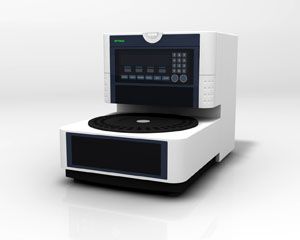The optimum balance of economics and performance on booth A1.539
Leading supplier, Spark Holland, will be showcasing the new OPTIMAS ? a dependable no-nonsense HPLC autosampler.

Leading supplier, Spark Holland, will be showcasing the new OPTIMAS – a dependable no-nonsense HPLC autosampler. Featuring Spark’s reliable injection technology, OPTIMAS combines robust injection with high precision and accuracy. With multiple injection modes including zero sample loss injection, OPTIMAS offers a superior price/performance ratio. Sample cooling is provided without restricting sample access and a large choice of vials can accommodate micro to prep samples. Reagent addition and mixing are easily programmed to reduce sample preparation time and errors. With Spark’s dependability and experience in autosampler development and innovation, OPTIMAS is a comforting choice for the demanding laboratory.
For further information please visit us on Analytica booth A1.539
E-mail: sales@sparkholland.com
SPE-Based Method for Detecting Harmful Textile Residues
January 14th 2025University of Valencia scientists recently developed a method using solid-phase extraction (SPE) followed by high-performance liquid chromatography coupled to high-resolution mass spectrometry (HPLC–HRMS/MS) for detecting microplastics and other harmful substances in textiles.
The Complexity of Oligonucleotide Separations
January 9th 2025Peter Pellegrinelli, Applications Specialist at Advanced Materials Technology (AMT) explains the complexity of oligonucleotide separations due to the unique chemical properties of these molecules. Issues such as varying length, sequence complexity, and hydrophilic-hydrophobic characteristics make efficient separations difficult. Separation scientists are addressing these challenges by modifying mobile phase compositions, using varying ion-pairing reagents, and exploring alternative separation modes like HILIC and ion-exchange chromatography. Due to these complexities, AMT has introduced the HALO® OLIGO column, which offers high-resolution, fast separations through its innovative Fused-Core® technology and high pH stability. Alongside explaining the new column, Peter looks to the future of these separations and what is next to come.